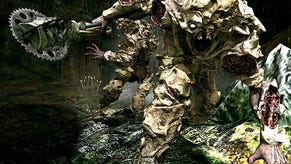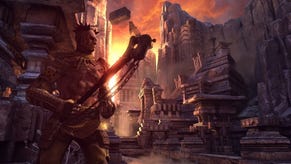Face-Off: Rage
Rage against the machines.
On PC, we find ourselves with a mountain of technological advantages over the Xbox 360 and PlayStation 3. Our Core i7 920 at 2.66GHz offers a much more powerful CPU than the consoles, while just the RAM alone in our GTX580 offers a 200 per cent boost over the entire memory available in both machines. We have an older, but still stupidly fast Samsung F1 1TB HDD in the unit too, which significantly outperforms the 2.5-inch laptop drives used by Sony and Microsoft in their consoles.
In the past, John Carmack has talked about how id can use 8k paging files for textures over the 4k files used on console due to memory constraints. This is potentially exciting stuff: it means that Rage can look a whole lot better on PC. Unfortunately, out of the box even on max settings, this is difficult to see. Here we're re-running our initial comparison video, comparing the PlayStation 3 version to the PC version, where we've enabled 8x anti-aliasing. An alternative version, pitting the 360 game against the computer version is also available.
There are some clear advantages here. Even without the custom configs now being presented on the internet by enthusiasts not happy with performance out of the box, we're still seeing a very significant improvement in the texture loading times, giving a much greater sense of solidity to the game world. The addition of 8x anti-aliasing also makes a big difference in terms of the quality of the image, eliminating "jaggies" almost completely and helping to resolve sub-pixel detail in the distance. In gameplay, id also enables a few post-processing effects that we don't see on console too, though these are rather minor.
However, texture quality in general remains much the same in terms of the variation between high and low quality artwork on-screen at any given point. There are clearly some improvements to the artwork resolved, but we are not seeing any kind of revelatory increase in detail we would hope to see bearing in mind the quality of the artwork we know to exist, and that id itself says is available to access.
So what's going on? Similar to the console versions, Rage on PC has a singular focus on resolving a 60Hz update and to do that, the vast majority of the graphical functions enthusiasts love to tweak have been completely removed from the front-end. Indeed, all users have to fiddle with are resolution settings, anti-aliasing levels, and a curious option called "GPU Transcode". All other options are handled by an inbuilt piece of code that analyses performance and adjusts quality to help ensure a 60FPS update.

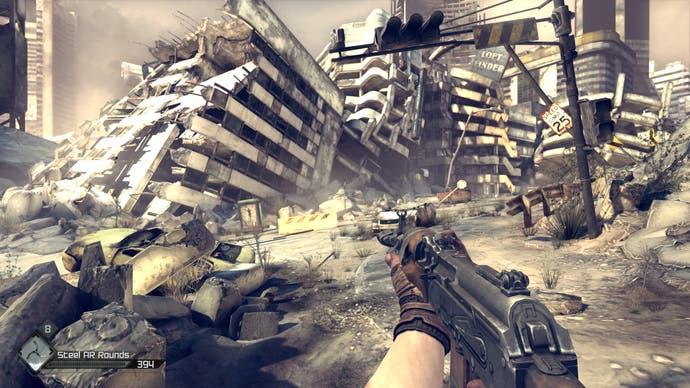
This is all absolutely fine, but the problem is that high-end systems don't seem to see the benefit and as you can see from our "out of the box" comparison videos and screenshots (8x AA, GPU transcode enabled) at a like-for-like 720p resolution, the differences are somewhat minimal. It's been down to graphics card vendors like NVIDIA and motivated enthusiasts to dig deep into the renderer's variables and attempt to come up with a better solution.
In the final analysis, id tech 5 is an engine that can scale according to the amount of horsepower you have available - so the obvious choice would be to recommend the PC version of Rage as the best choice: modern GPUs just have so much more power than the consoles, while a standard desktop hard drive effortlessly outperforms the console equivalents. However, as we've seen from launch, out of the box, Rage has issues - particularly with AMD graphics cards - and these are still being worked on, and there's a sense that we've yet to see the game running at its best.
We didn't have any particular issues with our i7/GTX580 combo, but we still didn't see the kinds of increase in visual quality that we were promised pre-launch: in the here and now we seem to be reliant on enthusiasts in order to unlock the full beauty of Rage - quite why the full range of options were not made easily available is a bit of a mystery and thus far, info from Bethesda and id has been limited on how the command line and console options should actually be used. This is frustrating, to say the least. We'd also hope that in future Carmack makes good on his talk to release an uncompressed texture pack for Rage, even if those raw assets would account for almost 100GB of data. If the art exists, why not utilise it and let those invested in their hardware make the most of the phenomenal effort id put into its core assets?

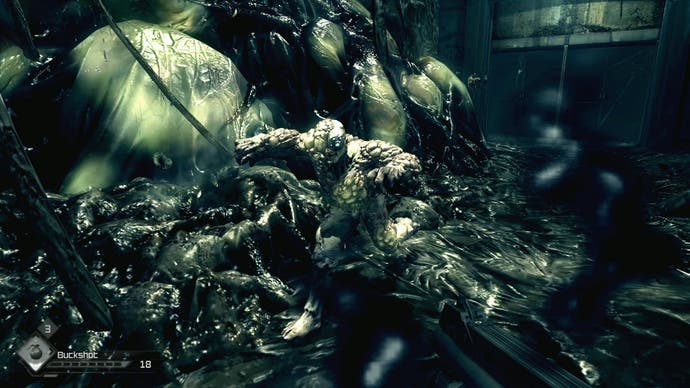
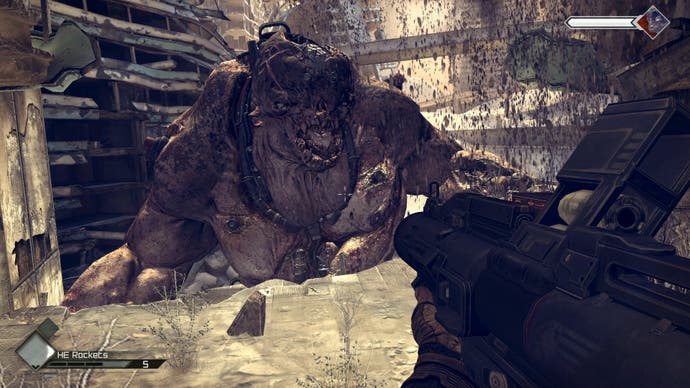

In terms of the consoles, the purchase recommendation is very straightforward: Rage is an easy win for the Xbox 360 - if you have the hard drive attached. The dynamic resolution scaling technology works more effectively on the Microsoft platform, and there are very few instances where you feel or even recognise that you're playing a sub-HD experience - unfortunately the same cannot be said for the PlayStation 3 where the visual sleight of hand is not quite so effective.
Another major issue we have with Rage is with the checkpointing system, which is fundamentally broken and can set you back well over half an hour of gameplay time if you haven't been religiously saving your progress manually. This in itself is time-consuming and annoying, more so on PS3 where both saving and loading takes longer than the preferred full 360 install.
Texture streaming is the other main bugbear people will have with Rage: it's noticeable on all platforms (even PC), but a full 360 install up against a partial PS3 install is no contest - the 360 wins hands-down and provides the better experience. At its worst, the combination of low resolution textures and sub-HD resolution combines to make Rage look rather bland, a touch blurry/blocky and detail-lite on the PS3 at times, something that just doesn't seem to be the case with the 360 game running exactly as id outlines.
The controversy right now seems to extend beyond the platform comparisons though. Is Rage enough to convince the enthusiast gaming audience that id software can still compete with the heavyweight developers in the genre that it created?
In many ways, the company itself has sought to avoid these comparisons and strike out with its own unique product - and perhaps that's for the best. Mega Texture technology provides the basis for Rage's unique look and the ability to run so much detail at 60Hz - something no other developer has managed to produce on console, but it's clear that elements such as animation, AI and physics are very old-skool when stacked up against Rage's competitors. It doesn't matter though - in terms of the overall package, the scale of the single-player offering and the fun it represents, id's latest is a hugely entertaining game - and at times, its technological focus really will take your breath away.




